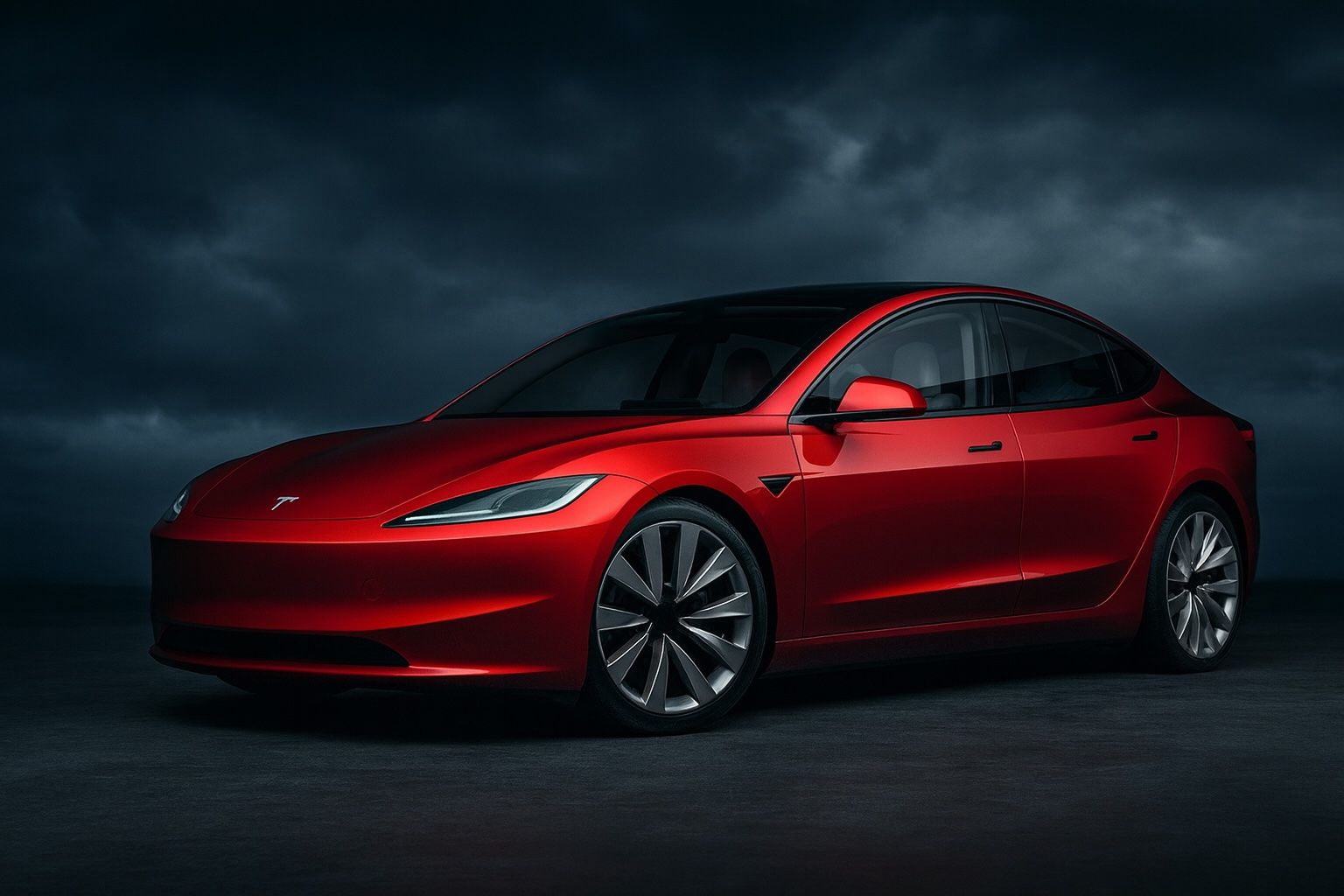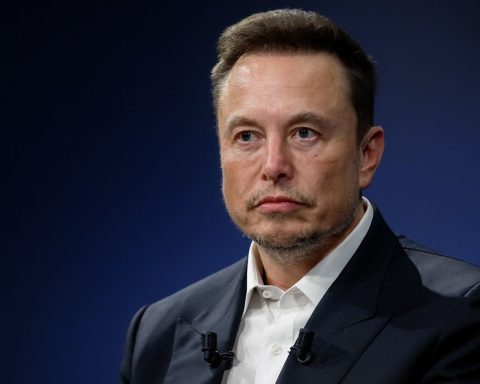- Affordable Tesla in 2025: Tesla has built the first versions of a new, “more affordable” model on June 2025. It’s expected to be a stripped-down variant of the Model Y crossover, with production ramping in late 2025 [1] [2]. CEO Elon Musk hinted it’s essentially “just a Model Y” with fewer features [3], likely starting in the mid-$30,000 range – versus the current Model Y’s ~$45K entry price.
- Key Specs & Timing: Early reports suggest the cheap Tesla (internal code E41) will be about 20% cheaper to make than today’s Model Y [4]. Tesla aims to start volume production by late 2025 [5] [6], so first deliveries could come around Q4 2025. The goal is to broaden Tesla’s market by hitting a lower price point, potentially around $30–35K.
- Major Tesla Roadmaps: Beyond this new model, Tesla’s pipeline includes other vehicles. A second-generation Roadster sports car is slated to debut by end of 2024 and go on sale in 2025 [7] (with a ~$200K base price [8]). The company also reaffirmed its electric Semi truck will enter volume production in 2026 [9] [10]. Tesla’s design chief hinted at a “Cyber SUV” and a smaller international Cybertruck variant in the future [11].
- Robotaxi & Autonomy: Musk has touted Tesla’s “Cybercab” robotaxi service as a major future business. He says Tesla will have autonomous ride-hailing in “half the population of the U.S. by the end of [2025]” once approvals are in place [12]. Tesla just secured a Nevada permit to begin road-testing its driverless vehicles [13], expanding trials beyond Austin to places like the Bay Area, Nevada, Arizona, and Florida as part of this robotaxi push.
Tesla is rolling out these new vehicles amid sagging sales. In Q2 2025, Tesla posted its worst year-over-year delivery decline in a decade [14], prompting investors to watch these launches closely. Analysts note that introducing lower-cost models could help “stem the steep decline in sales” [15]. One Reuters analyst observed that despite the weakness, Tesla still has “a strong foundation in…energy storage, robotics, and AI-powered transportation,” and that developments like robotaxi trials could reignite investor enthusiasm [16] [17].
What We Know About Tesla’s New Cheap Model
Tesla’s public statements are limited, but a few facts have emerged. In its Q2 2025 report, Tesla confirmed it built “first builds of a more affordable model in June, with volume production planned for the second half of 2025” [18]. On the earnings call, Musk answered a question by revealing this new car “is just a Model Y” [19], implying it shares the Model Y platform. Media reports (backed by spy photos) suggest it will be a “stripped-down” Model Y – possibly with a smaller battery and simpler interior – to cut costs [20] [21].
Pricing & Features: Observers speculate Tesla will target around $30–35K for the base price [22] [23]. For comparison, the current entry Model Y is about $45K in the U.S., so this cheaper trim could attract new buyers. It may achieve savings with cheaper materials (e.g. cloth seats), omitted features, and a scaled-down range. A Reuters report says the codename for this project is “E41” in China and that it will cost at least 20% less to produce than the standard refreshed Model Y [24]. (Tesla is also reportedly planning a similarly cut-down Model 3 sedan in parallel [25].)
Market Impact: When Tesla launched the Model 3 in 2017 at a much lower price than its luxury cars, deliveries surged in following years [26]. Many investors hope this new model will have a similar effect. Motley Fool analysts note: “Model 3 transformed Tesla’s business. While this launch may be smaller, it could similarly matter for growth and valuation.” If Tesla can actually hit volume production by late 2025 as planned, early reviews and buyer interest will be crucial.
Other Upcoming Tesla Vehicles
Tesla’s near-term roadmap goes well beyond one car. Below are some highlights of models we expect in the next 1–2 years:
- Cybertruck Variants: The electric Cybertruck pickup has faced delays and production challenges. Tesla CEO Elon Musk confirmed Cybertruck deliveries finally resumed in April 2025 (as a “Long Range” RWD model), albeit at a higher price ($69,990 after hiking) and with many base features removed [27]. Tesla is now hinting at additional Cyber models tailored for global markets. Chief Designer Franz von Holzhausen recently said that both a full-size “Cyber SUV” and a more compact Cybertruck are things Tesla has “considered” [28]. In other words, expect a more conventional 7-seat SUV (to compete with big gas SUVs) and a slimmer Cybertruck (for Europe/Asia) in concept designs or future plans. Notably, Tesla also stated it will not use the Cybertruck’s stainless-steel shell for other vehicles [29], so any new designs may look “inspired by” the Cybertruck but with different materials.
- Robotaxi (Cybercab): Tesla’s ultimate goal is to deploy a fleet of autonomous “Cybercab” taxis. Musk claims the company is “getting regulatory permission” in many states (California, Nevada, Arizona, Florida, etc.) and plans to have ride-hailing in half of U.S. population areas by year-end [30]. Tesla already runs a pilot in Austin where Tesla employees give rides in modified Model Y SUVs (each with a safety rider) [31]. With a new Nevada testing permit [32], Tesla can expand public road tests there. Most experts agree full autonomy will take years, but regulators and companies (even Tesla) are fast-tracking trials. As one industry strategist notes, Tesla’s focus on FSD (Full Self-Driving) and robotaxis could ultimately add orders of magnitude more value than car sales alone – if it works. Tesla’s push also comes amid broader scrutiny of self-driving tech; for now, Tesla continues to offer its FSD subscription while proving safety in each new city.
- Tesla Semi Truck: Beyond cars, Tesla is preparing to build its long-delayed Semi tractor-trailer. Tesla’s team has set up a dedicated Semi factory by Giga Nevada, and Musk recently confirmed on social media that mass production of the Semi begins in 2026 [33]. Tesla aims for 50,000 Semis per year once at full capacity [34]. To date, only small batches (dozens) of Semis were delivered to key customers (e.g. PepsiCo) for testing. CleanTrucking reports new equipment arriving at the Gigafactory, and program leaders say series production is targeted for next year [35] [36]. Customers who reserved Semis (with $20K deposits) remain in limbo, but Tesla has floated pricing around $150–180K depending on range. The Semi is a crucial project for Tesla’s ambitions in freight and energy, but it will mainly impact commercial fleets rather than retail consumers.
- Roadster (2026 model year): Finally, Tesla’s ultra-fast Roadster sports car (2nd generation) is expected to appear by late 2024 with sales starting in 2025 [37]. This high-end car (with a 200-kWh battery and 620-mile range) is aimed at enthusiasts: base price ~$200K [38], or $250K for limited “Founders Series.” Elon Musk originally boasted a 0–60 mph time under 2 seconds and a top speed over 250 mph [39]. While this car won’t move many units, it’s emblematic of Tesla’s tech prowess.
The Competitive EV Landscape
Tesla’s new car won’t arrive in a vacuum. Virtually every automaker is racing to launch electric models, especially SUVs, in the $25K–$50K price range. For example:
- Nissan’s all-new 2026 Leaf starts at about $26,000 [40].
- Hyundai’s Kona Electric (2025) starts around $34,470 [41].
- Chevy’s forthcoming Equinox EV (2025) is about $34,995 [42].
- Toyota’s bZ4X electric SUV begins at $38,520 [43].
- VW’s popular ID.4 SUV starts near $41,420 [44].
Even more affordable Chinese EVs (e.g. BYD’s Dolphin, Tesla-busting $25K models) are emerging at home and abroad. Traditional luxury brands (Mercedes, BMW, Audi) are also moving upmarket EV SUVs with new models around $50K–$60K to challenge Tesla’s offerings.
This crowded field puts pressure on Tesla’s new entry. As a Reuters analyst warns, Tesla now faces “fierce competition from Chinese EV makers” and growing EV shares by traditional automakers [45]. Another point of comparison: Tesla’s new base EV is essentially catching up, not leapfrogging, since it’s derived from existing designs. In other words, Tesla’s strategy here is matching the competition with a cheaper version of what it already makes – rather than revolutionizing the segment. Analysts therefore caution that while a $30K Tesla could boost volume, it will also cannibalize some sales of the current Model 3/Y [46].
Expert Commentary and Outlook
Industry experts are mixed on what the new Tesla lineup means for the company’s future. On the optimistic side, many analysts note that Tesla’s strength isn’t limited to cars. As one Reuters commentator put it, even as sales dip Tesla still “maintains a strong foundation in the key growth sectors of energy storage, robotics, and AI-powered transportation” [47]. This means Tesla’s value will also be driven by its software, FSD/robotics (Optimus robot plans), and solar/energy business. Another strategist pointed out that news of Tesla expanding its autonomous ride-hailing (e.g. talks with Nevada regulators) could buoy investors despite the core EV slowdown [48].
On the other hand, some warn that Tesla’s short-term results hinge on its new cars delivering. Street expectations had built up around a Tesla Model 2 ($25K) for years. Musk’s team quietly scrapped those plans in favor of cost-cutting existing models. That means success depends on how well this modest new Model Y variant sells. A sloppy launch or quality issues could disappoint the market. Indeed, Tesla’s most recent earnings missed estimates, even though gross margins held up [49]. In response, Tesla is trying to remind investors of upcoming catalysts – the new model, robotaxis, Semi production – to regain confidence.
Key Takeaways
Tesla’s upcoming vehicle reveals and plans show a company at a crossroads. On one hand, it’s adapting to market realities: lowering prices, refreshing old models, and branching into software/AI aggressively. On the other hand, Tesla’s core EV lineup is aging, and rivals are closing in. In the immediate term, all eyes are on that new affordable EV. If it launches smoothly, Tesla may stabilize its deliveries in late 2025. If not, the company will be relying on its ambitious robotaxi vision and other projects to drive growth. Either way, Tesla’s “next car” is only one part of a much bigger story about how this company will evolve in the very competitive auto industry.
Sources: Recent financial reports and news analyses of Tesla’s strategy [50] [51] [52] [53] [54] [55] [56] [57] [58] [59] [60] [61]. These include statements from Tesla executives, regulatory filings, and expert commentary from outlets like Reuters, Electrek, InsideEVs, and mainstream auto media.
References
1. electrek.co, 2. insideevs.com, 3. insideevs.com, 4. www.reuters.com, 5. electrek.co, 6. insideevs.com, 7. www.caranddriver.com, 8. www.caranddriver.com, 9. www.teslarati.com, 10. www.cleantrucking.com, 11. www.teslarati.com, 12. techcrunch.com, 13. techcrunch.com, 14. www.reuters.com, 15. www.reuters.com, 16. www.reuters.com, 17. www.reuters.com, 18. electrek.co, 19. insideevs.com, 20. electrek.co, 21. electrek.co, 22. electrek.co, 23. insideevs.com, 24. www.reuters.com, 25. www.reuters.com, 26. www.nasdaq.com, 27. en.wikipedia.org, 28. www.teslarati.com, 29. www.teslarati.com, 30. techcrunch.com, 31. techcrunch.com, 32. techcrunch.com, 33. www.teslarati.com, 34. www.teslarati.com, 35. www.cleantrucking.com, 36. www.cleantrucking.com, 37. www.caranddriver.com, 38. www.caranddriver.com, 39. www.caranddriver.com, 40. www.caranddriver.com, 41. www.caranddriver.com, 42. www.caranddriver.com, 43. www.caranddriver.com, 44. www.caranddriver.com, 45. www.reuters.com, 46. electrek.co, 47. www.reuters.com, 48. www.reuters.com, 49. www.reuters.com, 50. electrek.co, 51. insideevs.com, 52. www.reuters.com, 53. www.reuters.com, 54. www.teslarati.com, 55. nevadacurrent.com, 56. www.caranddriver.com, 57. www.cleantrucking.com, 58. www.teslarati.com, 59. techcrunch.com, 60. www.caranddriver.com, 61. www.caranddriver.com










